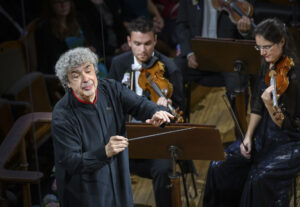
Aswathy V Nair, born to the legendary writer MT Vasudevan Nair and renowned dancer Kalamandalam Saraswathy, is an exponent of Mohiniyattam, Bharatanatyam, and Kuchipudi. In a unique effort to connect her father’s literary heritage to a global audience, she ventures into filmmaking as the co-producer—and unexpectedly, as a director—of Manorathangal, an ambitious anthology series of nine films based on her father’s acclaimed short stories. Now streaming on Zee5, the series brings together a host of gifted directors and exceptional actors, each offering their distinct voice to the iconic nonagenarian writer’s richly layered narratives.
As we sit down for a conversation, Aswathy, who also helmed a segment in the anthology titled Vilpana, reflects on the monumental task of bringing MT’s profound stories to life on screen through the series. She also offers insights into her journey of preserving and expanding the legacy of one of India’s most revered writers and shares her thoughts on why MT’s stories continue to resonate with audiences across generations. It was during the COVID lockdown, that I watched Stories by Rabindranath Tagore (2015) on Netflix and thoroughly enjoyed it.

That’s when the idea of creating an anthology based on achan’s stories struck me. That was the seed that set Manorathangal in motion. Initially, I shortlisted about 50 stories, aiming to capture narratives from 1957 to 1998.
With achan’s help, I reduced the number from 50 to 20. Narrowing it down further to the final selection was challenging, as all 20 stories were very dear to us. However, we knew certain stories had to be included mandatorily.
For instance, I was particularly keen on Kazhcha, and I insisted that we also include Kadugannawa Oru Yathra Kurippu and Sherlock. The other six stories were selected after discussions with the directors. We sent them options, and based on their feedback and the stories they felt a special connection to, we finalised a list of nine stories, even though we initially planned for 10.
My intention was to present a writer’s work to a global audience in a way that highlighted the uniqueness of each story. I wanted each story to stand on its own, with each director leaving their distinct mark. Thus, we deliberately chose not to connect the stories thematically.
The only thread linking them is that they all originate from the same writer, who has crafted diverse worlds within his creations. In selecting the stories, did you encounter any concerns about their relevance in today’s context, given they span from the late 1950s to the late 1990s? For instance, from one of Priyadarshan’s interviews, MT initially had reservations about retelling Olavum Theeravum, given that it had already been adapted for the screen and might now seem dated..
. I did not see this as a problem because these stories have resonated with multiple generations of readers. What convinced me was that, regardless of whether a story is set in the 1960s, 70s, 80s, or 90s, they all revolve around universal human emotions and the workings of the human mind.
This is why achan named the series Manorathangal, meaning mindscapes. Human emotions are timeless and do not require a contemporary connection. I believe there is value in exposing the younger generation to how life was during those periods, as they might not otherwise engage with films from those times.
Presenting these stories in this way can pique their interest and possibly inspire them to read the original works. Regarding Olavum Theeravum, though achan initially questioned the need to retell it, Priyadarshan sir expressed a strong desire to reinterpret it in his own way. Eventually, achan agreed, recognising that Priyadarshan sir’s vision would offer a unique perspective.
We completed nine segments in 18 months. We faced numerous challenges at every stage of the project. Filming each segment required significant effort equivalent to making a feature.
Initially, finding producers who understood and valued the content was a significant hurdle. During execution, we encountered difficulties when we began shooting in the second phase of COVID. While planning to shoot Sherlock in Canada, the Ukraine crisis erupted, causing our passports to be held up at the Canadian embassy due to the processing of refugee visas.
This was particularly stressful as Fahadh (Faasil) had allocated only 12 days between the shoots of Pushpa (2021) and Vikram (2022), making it crucial to adhere to that tight schedule. There were moments when I thought we might have to abandon Sherlock due to these constraints. For Kadugannawa, we planned to shoot in Sri Lanka in October, but the economic crisis and riots there forced us to postpone until December, when Mammookka’s dates were available.
We also dealt with security issues during this period. Despite these numerous challenges, our priority was to create a conducive environment for the directors to make quality films. The decision to direct Vilpana was entirely by chance.
Originally, the story was meant to be directed by someone else, who intended to cast a Hindi actor as Gita Parekh. Even though we thought of shelving the story at one point, the team at Saregama was very keen on retaining Vilpana, especially since it was one of the two women-centric films in the project. They initially encouraged me to take on the direction, given my deep familiarity with the script from previous narrations.
I initially resisted for a few months, hoping to find another director, but their insistence led me to reconsider. Also, while I was busy on Santosh sir’s segment, he urged me to seize the opportunity when he learned that Vilpana might be shelved. He believed that my perspective as a woman would enhance the storytelling and offered to support me with a strong team and guidance.
His encouragement and mentorship were pivotal in my decision to direct the film. Asif was the first actor who came to mind for the role of Sunil. Fortunately, he liked the role and agreed to join the project.
Regarding the role of Gita, I wanted an actor over 40 or, if younger, someone who could convincingly portray the character’s age. I initially approached a few Malayalam actors, but they had reservations. Later, I approached Konkona Sen Sharma, whom I admire greatly.
Unfortunately, she was busy directing a film at the time even though she was interested. While searching for alternatives, I came across Madhubala in a Telugu film. Noting that she was active again and had not appeared in Malayalam cinema for a while, I approached her.
She was immediately enthusiastic about the role, especially since it offered her the chance to play a layered character she had not tackled before. The first thing I told achan was that we must consider three directors: Priyadarshan sir, Jayaraj sir, and Shyamaprasad sir. Each had been eager to adapt one of achan’s scripts for more than two decades.
We decided to prioritise them before considering other directors. The idea was also to include directors from the younger generation who had not previously had the opportunity to tell MT’s stories. We aimed for a cross-section of different generations, which was a key factor in our selection process.
Since MT is the common thread in the series, we needed a way to introduce each story effectively. I proposed to Saregama that an actor should provide a brief introduction for each story. Given the need for a widely recognised name across India, especially for the series’ multilingual dub, Kamal sir was the natural choice.
There were two key reasons. Firstly, Mammookka was particularly enthusiastic about this story among the stories we finalised. Secondly, he had long expressed a desire to play this role, having previously wished to adapt the story Ninte Ormakku into a full-fledged feature film—a project that never materialised despite discussions with various directors.
Thus, when we selected Kadugannawa as one of the nine stories, Mammookka was the obvious choice. One would be Nirmalyam (1973). Another is Oru Cheru Punchiri (2001), particularly for the poignant manner in which the story is told.
It’s definitely gratifying to think that we might have the opportunity to tell another set of stories. I would be very excited to take on such a huge task, although I can’t say when it might happen. But yes, why not?.














